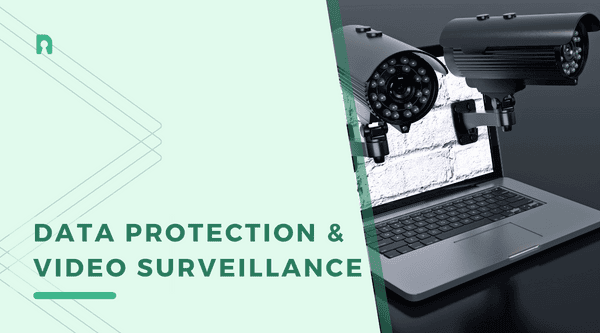
Data Protection & Video Surveillance

Video surveillance systems are omnipresent in many aspects of daily life, serving to enhance security in buildings, public spaces, workplaces, and many other locations. However, the use of video surveillance systems also presents challenges to data privacy. In this article, we want to show how you can ensure privacy while increasing security through the use of video surveillance systems.
Why Data Privacy is Important in Video Surveillance
Video surveillance can be a useful measure to improve overall security, but it also constitutes an intrusion into privacy. The data collected by video surveillance systems can be highly sensitive and must be protected accordingly. Therefore, it is crucial to carefully consider data privacy when installing video surveillance systems.
Data Privacy and Video Surveillance: What to Consider
1. Comply with Data Privacy Regulations
The installation of video surveillance systems is subject to regulations and requirements. The processing of personal data is governed by the General Data Protection Regulation (GDPR), and it is important to comply with these data privacy regulations when installing video surveillance systems. This includes informing the individuals affected, limiting the purpose of data collection, and restricting access to the data.
2. Use Suitable Technology
It is important to use appropriate technology when installing video surveillance systems. The technology should comply with data privacy requirements, such as the ability to store data encrypted. Data should only be stored for as long as necessary to fulfill the intended purpose.
3. Carefully Choose Camera Placement
The placement of cameras is a critical factor for data privacy. Cameras should be positioned to only capture the necessary area. Surveillance of public areas such as sidewalks or roads is generally not allowed. Cameras should also avoid capturing private areas such as residential or office spaces.
4. Clearly Display Notices
It is important to inform individuals affected by video surveillance. Clear notices should be displayed in visible locations. The notices should include the purpose of the surveillance, the responsible party, and contact information for further questions.
5. Limit Access to Data
Access to stored data should be limited to a select group of individuals. Transmission of data to third parties is only allowed under certain conditions. Regular reviews of data processing should also take place to ensure that stored data is necessary and used only for the intended purpose.
In addition, individuals affected by video surveillance must be informed. The information must be provided in a clear and understandable language and should include details about the party responsible for data processing, the purpose of data processing, and the retention period of the data. The right to access, rectify, and erase data should also be highlighted.
How to Protect Privacy in Video Surveillance?
There are various ways to protect privacy in video surveillance. One option is to blur or pixelate individuals and objects that are not relevant to the purpose of surveillance. Additionally, cameras should be positioned to only capture public areas and not intrude on the privacy of neighboring properties or residences.
Another option is to reduce the retention period of data. The shorter the data is stored, the lower the risk of it falling into the wrong hands or being misused for other purposes.
Conclusion
Video surveillance can contribute to enhancing the security of individuals and property. However, the data privacy rights of individuals must also be preserved. To achieve this, video surveillance must be designed in compliance with data privacy regulations and consider best practices to protect privacy while maintaining security. At heyData, we provide GDPR-compliant data privacy solutions for video surveillance to ensure the highest level of privacy protection.


